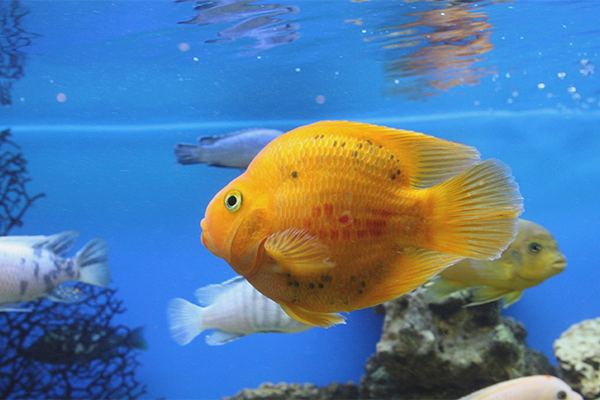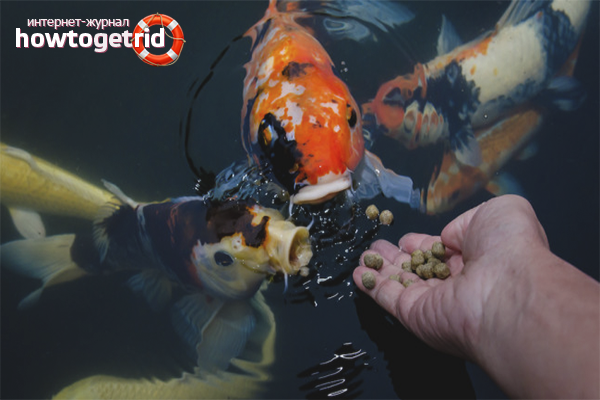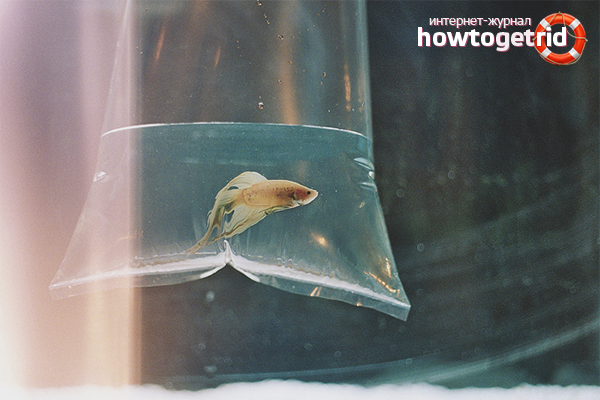The content of the article
Aquarium is considered to be a stylish and original solution of interior design. It gives the room lightness, comfort and some peace. Psychologists in one voice say that the underwater world brings thoughts in order, relaxes and helps to find a solution to the pressing issues. For this reason, all experienced doctors in the office is an aquarium with fish. It performs wellness and aesthetic function, so you need to learn how to care for bright aquatic inhabitants correctly. Consider the important aspects in order.
How to care for aquarium
- The main mistake that the newly minted fish owners make is the wrong choice of aquarium. Despite the fact that you are not very experienced aquarist, the volume of 25-30 liters will not be enough. In addition, small containers are more difficult to maintain, it is much easier to maintain the natural environment in the aquarium of 55-75 liters. At the same time you will have the opportunity to keep several species of fish at the same time.
- A question that worries many "How to fill an aquarium?". Create a cozy, close to natural, furnishings will help all kinds of fillers for the aquarium. First you need to take care of the soil, choose small pebbles. It comes in different colors, shapes and sizes, based on the types of fish that you plan to keep in the aquarium. If water inhabitants have a bright color, choose restrained tones of the soil (sand, gray, black, white, etc.).
- When the issue with the ground is closed, take care of the flora. Rooted water plants into the base of the pebbles, from which the fish will begin to absorb nutrients. Also, such manipulations will help the inhabitants feel more comfortable, they will be able to hide in algae or grass from excessively active cohabitants. If possible, give preference to natural greens, rather than artificial.
- Be sure to purchase a thermometer for aquariums. Daily read the water temperature, in the case of deviations from the optimal indicators include heating. The reproduction of viviparous fish occurs in a narrow range of temperatures (18-28 degrees), it is necessary to take into account the peculiarities of each species separately.
- Be sure to monitor the water hardness and cleanliness of the aquarium. Once every 5 days, replace 1/3 of the old soil with new soil. Do not turn off the water filter, if possible clean it three times a week. Take care of the availability of lighting for the aquarium, the tank should be lit 10-12 hours a day.
How to feed aquarium fish
- For the most part, feeding fish is limited to 1-2 doses. The required amount of food depends on how much food the inhabitants eat in 10 minutes. Pay attention to the type of food, taking into account age factors and the time of year when a lack of vitamins detrimental effect on the health of fish.
- If you keep fish that often stay awake at night, stop feeding once a day. Such inhabitants of the water world eat in the light of blue or before turning off the lights at all.
- Fry aquariums require more frequent feeding. If the adults eat 4% of the food by total body weight, the fry eat 15% as they grow rapidly.
- An important feature of feeding fish is the mode.Make a certain schedule for yourself, write down in it all meals. You can not overfeed fish, otherwise they will die. If in doubt, better feed. Fish suffer from obesity infertility and early death, especially for those species that have a peculiarity to overeating.
- Do not worry about the fact that you allegedly poured little fish feed. Residues of food quickly decompose in the aquatic environment, so they automatically become unsuitable for consumption. There is also a massive blockage of the aquarium, as a result of which there is a need for regular cleaning of the filter and replacement of the soil.
- Once a month, give the fish a so-called “hungry day”; do not feed them for a whole day to normalize digestion. Carry out such manipulations simultaneously with cleaning and washing the aquarium so that all changes in the habitual way of existence take place at the same time.
- Feeders for aquarium fish, which are attached to the walls of the tank, are very popular. Such devices do not allow the food to settle on the surface of the aquarium and clog the aquatic environment. In addition, when feeding live food, it will not sink to the bottom.The last clarification is extremely important when keeping fish that feed in the middle and upper bands of the aquatic environment.
- Those who still decided to use a special feeder, this recommendation is useful. Encourage the fish to start eating at your call: sprinkle food, then gently tap your finger on the wall of the aquarium in the area of the feeder. After about 2 days the aquatic inhabitants will develop a reflex to the food, so they will strictly follow the feed distribution zone.
- Correctly choose a balanced menu will help knowledge about the natural environment of the inhabitants. Then you can easily combine one food with another, based on the preferences of certain species of fish. The main thing is that the food was diverse and natural, do not save on quality.
- Do not feed the fish with one dry food, combine it with live food. Every month, buy a pet a portion of food that they don’t know before, watch for the reaction. When feeding the young, focus on live feed. Watch that the pellets are not too large, otherwise the fish will not chew them, problems with digestion will appear. If the seeds are too small or in the form of powder / dust, the fish will spill out and quickly become fat.
How to transport aquarium fish
There are cases when it is necessary to move fish from one place or, even worse, a city to another. As a result, it becomes necessary to transport aquatic inhabitants in a more suitable way. The move can cause tremendous stress in the fish, so the preparation should be thorough.
Bank. You can transport the fish in tight plastic bags or in glass jars. The last option is preferable, but you need to handle it with care. Depending on the number of fish, choose the optimal volume from 0.5 to 2 liters. When transporting water dwellers in the winter season, put a heating pad next to the tank, wrap it with a thick woolen blanket, and then place the jar in a bag.
If the air temperature is above -7 degrees, you can use not a dense bag, but a regular plastic bag. Place the fish in the jar, wrap the container with a woolen cloth and a heating pad next to it, put it in a bag and proceed with transportation freely. Important point: in this case, the time spent on the street should not exceed a quarter-hour mark.
Important!
Do not fill the jar to the brim, leave 7 cm from the mouth of the container.Under these conditions, keep the vessel with the fish in the street no longer than 40 minutes. If you are planning to stay longer in the cold, use plastic bags.
Package. Get in the pet store or on the market packages for transportation, they are reusable. The product is a bag of dense polyethylene with rounded edges.
They are partially filled with water (approximately ¼), then pinned with a special silicone lock. Next, you need to pump air into the cavity using a mini-compressor. To increase the transport time, pump oxygen.
When transporting fish in quantities from 500 or more in a 20-liter package, the exposure time sometimes reaches 70 hours. If you do not have many fish, purchase smaller packages, transport them in the same way.
You can often hear that such home dwellers do not require financial costs and time, but this error is erroneous. Experienced aquarists will tell in detail about how difficult it is to keep the fish and their aquatic house in proper condition. The process requires a slow approach and attention to detail, the underwater world is not able to exist without competent support from outside.
Video: care for a home aquarium













To send